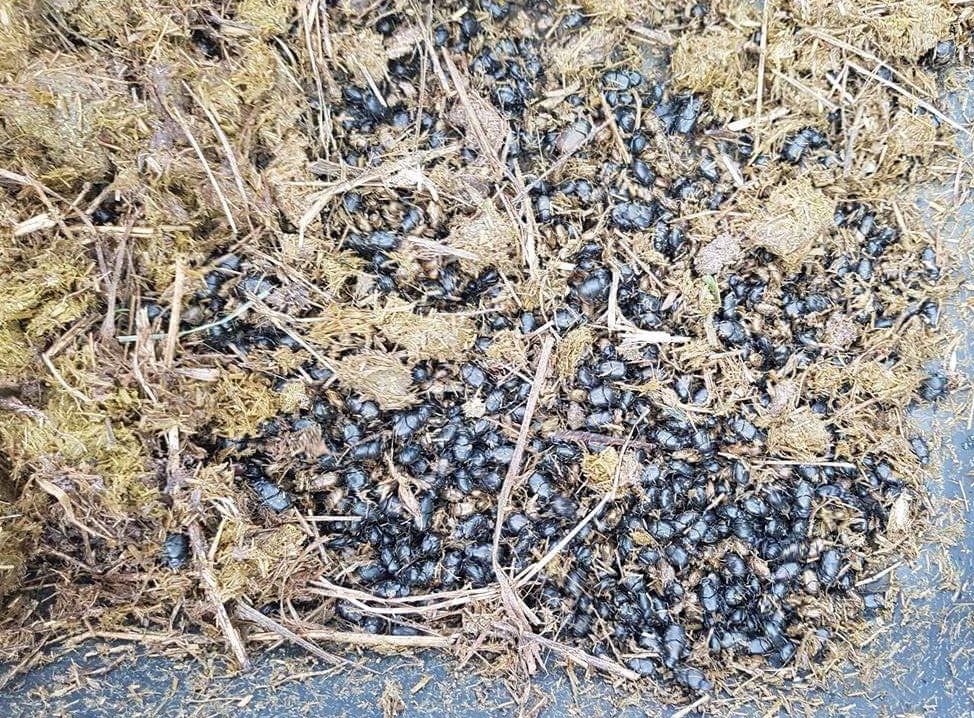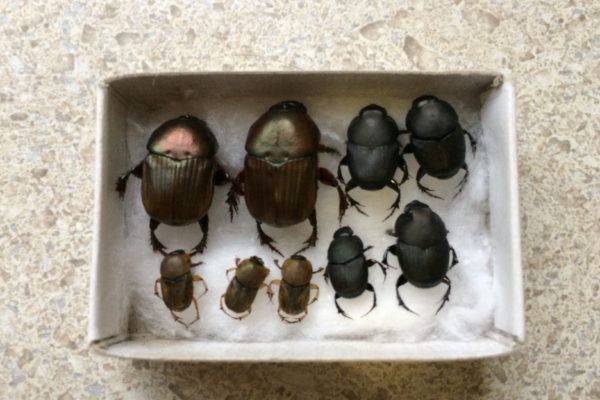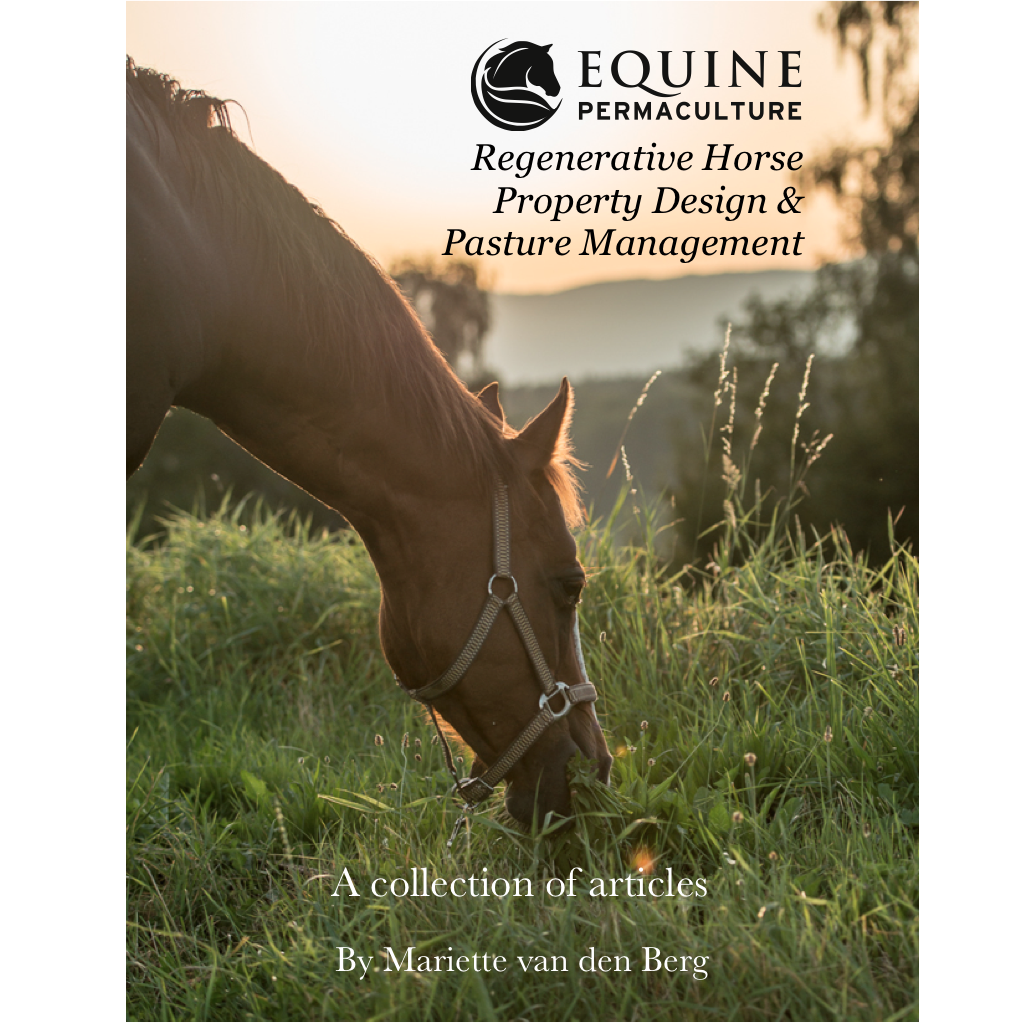Adapted from the article by Professor of Zoology and Entomology, University of the Witwatersrand
Dung beetles are very cool creatures! They eat your horse or cow poo (how fantastic!), decompact soil and increase the availability of nutrients (and water)!
Dung beetle behaviour has fascinated humans for thousands of years – including the ancient Egyptians, who observed that the beetles’ ball rolling is influenced by the sun. We now even know that some species of dung beetles even use the moon and galaxies to navigate! They are currently the only known non-human animal to navigate and orient themselves using the Milky Way!! Super cool 🙂 Check out the video here: https://youtu.be/BHdtktnb3ms
Dung beetles evolved at least 65 million years ago, as the dinosaurs were in decline, and the mammals (and their droppings) starting to dominate. There are about 6000 species worldwide, concentrated mainly in the tropics where they feed mostly on the dung of terrestrial vertebrates. Dung beetles have been cleaning up the planet ever since; but what on earth do they do with all that poo? Here are some interesting facts:
Dung specialists
A dung beetle can bury dung 250 times heavier than itself in one night. There is one species Onthophagus Taurus that can pull a load 1,141 times it own weight! It’s named the strongest insect in the world!
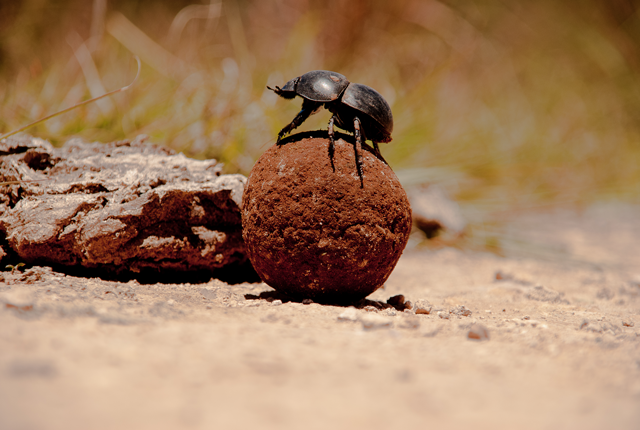 Many dung beetles, known as rollers, roll dung into round balls, which are used as a food source or breeding chambers. Others, known as tunnelers, bury the dung wherever they find it. A third group, the dwellers, neither roll nor burrow: they simply live in manure. Dung Beetles can grow to 3 cm long and 2 cm wide.
Many dung beetles, known as rollers, roll dung into round balls, which are used as a food source or breeding chambers. Others, known as tunnelers, bury the dung wherever they find it. A third group, the dwellers, neither roll nor burrow: they simply live in manure. Dung Beetles can grow to 3 cm long and 2 cm wide.
All the species belong to the superfamily Scarabaeoidea; most of them to the subfamilies Scarabaeinae and Aphodiinae of the family Scarabaeidae (scarab beetles). As most species of Scarabaeinae feed exclusively on faeces (some also on mushrooms and decaying leaves and fruits), that subfamily is often dubbed true dung beetles. There are dung-feeding beetles which belong to other families, such as the Geotrupidae (the earth-boring dung beetle).
Eating dung!
Vulgar, but true, dung beetles eat dung from herbivores and omnivores. But they are fussy eaters, picking out the big bits and concentrating on the tiniest particles, 2-70 microns big (1 micron = 1/1000 of a millimetre), which is where most of the nitrogen in dung is to be found.
All organisms need nitrogen to build proteins, such as muscle. Dung beetles get theirs from dung. By eating poo, dung beetles may be selecting the cells from the gut wall of the herbivore which made it. These are a protein-rich nitrogen source. The latest studies show that obesity and diabetes in humans might be linked to our individual gut microbiomes. Dung beetles might be using their gut microbiome to help them digest the difficult components of dung. In a way plant material is fermented double before it’s returned to the soil– for example first by the cow or horse– then the poo is again fermented by the dung beetle!
Dung transport
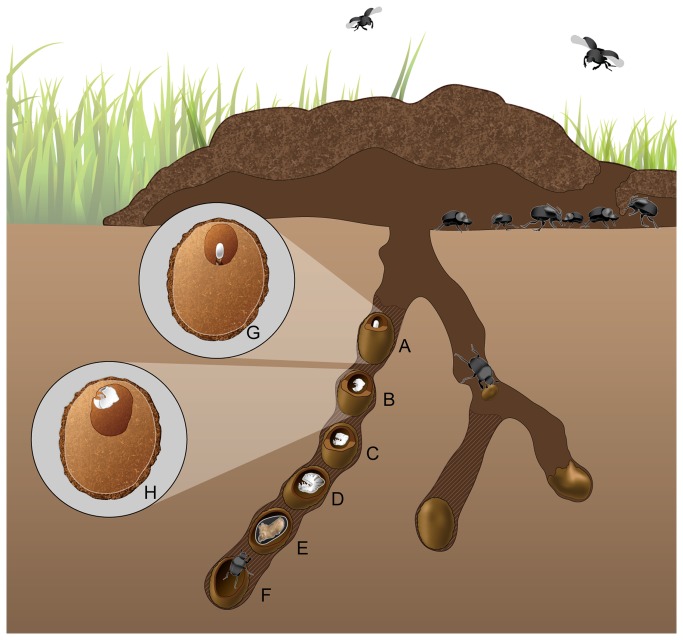 The majority of dung beetles (~90%) tunnel directly beneath the dung pat and make an underground nest of brood balls in which they lay eggs. You’ll never see them unless you are prepared to poke around in the stuff. So if you have them in your pasture – go out there and check underneath the poo. You will see them quickly moving away, burring themselves back into the soil.
The majority of dung beetles (~90%) tunnel directly beneath the dung pat and make an underground nest of brood balls in which they lay eggs. You’ll never see them unless you are prepared to poke around in the stuff. So if you have them in your pasture – go out there and check underneath the poo. You will see them quickly moving away, burring themselves back into the soil.
On the other hand, the roller dung beetles transport their prize on the soil surface. They use celestial cues such as the sun or the moon to keep to a straight track away from competitors that might steal their ball. Yes you read it well – roller dung beetles need to run fast, otherwise their poo ball gets stolen! A species of dung beetle (the African Scarabaeus zambesianus) navigates by polarization patterns in moonlight, the first animal known to do so. Dung beetles can also navigate when only the Milky Way or clusters of bright stars are visible, making them the only insects known to orient themselves by the galaxy, allowing it to dominate the midnight market in dung transport.
The broodball; the packed lunch for larval beetles
This is what the brood ball represents to the larval dung beetle. Hatching from a single egg inside each brood ball, the larva eats its way around the interior of the ball. This dung is coarse and crunchy, so the larva has chewing mouthparts not found in the adult beetle, and doesn’t have the luxury of selecting what it can eat or discard, so it eats everything – several times. Therefore, its microbiome is different from their parents’, and might contain symbiotic microorganisms living in a mutually beneficial relationship with the host larva. That gives the larva access to sugars in otherwise indigestible cellulose, and may even “fix” nitrogen from the atmosphere.
Other uses for dung
Dung beetles also uses dung as a token to attract females, or they stand on a poo ball to cool their feet in hot dessert enrichments. On a hot day in the Kalahari the soil surface can reach 60°C, which is death to any animal that can’t control its body temperature. To avoid overheating dung beetles while rolling their balls in the blazing midday sun, climb on top of the ball to momentarily cool off, before hot-footing across the sand looking for shade. Giving them chilled dung balls from the fridge allows them to roll further before going back onto the ball. Heated balls have the opposite effect. And giving them insulating silicon boots lets them tolerate high temperatures for longer, showing that the dung ball is used as a thermal refuge from the heat. A very interesting evolutionary adaptation!
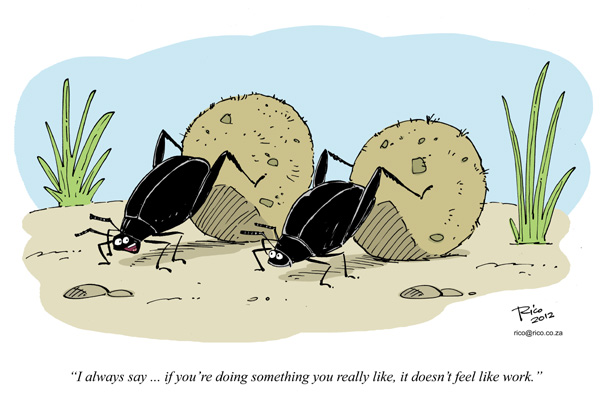
These facts clearly show how amazing dung beetles are, but which species do we have in Australia and how can they specifically benefit horse properties?
Read our next blog post!

